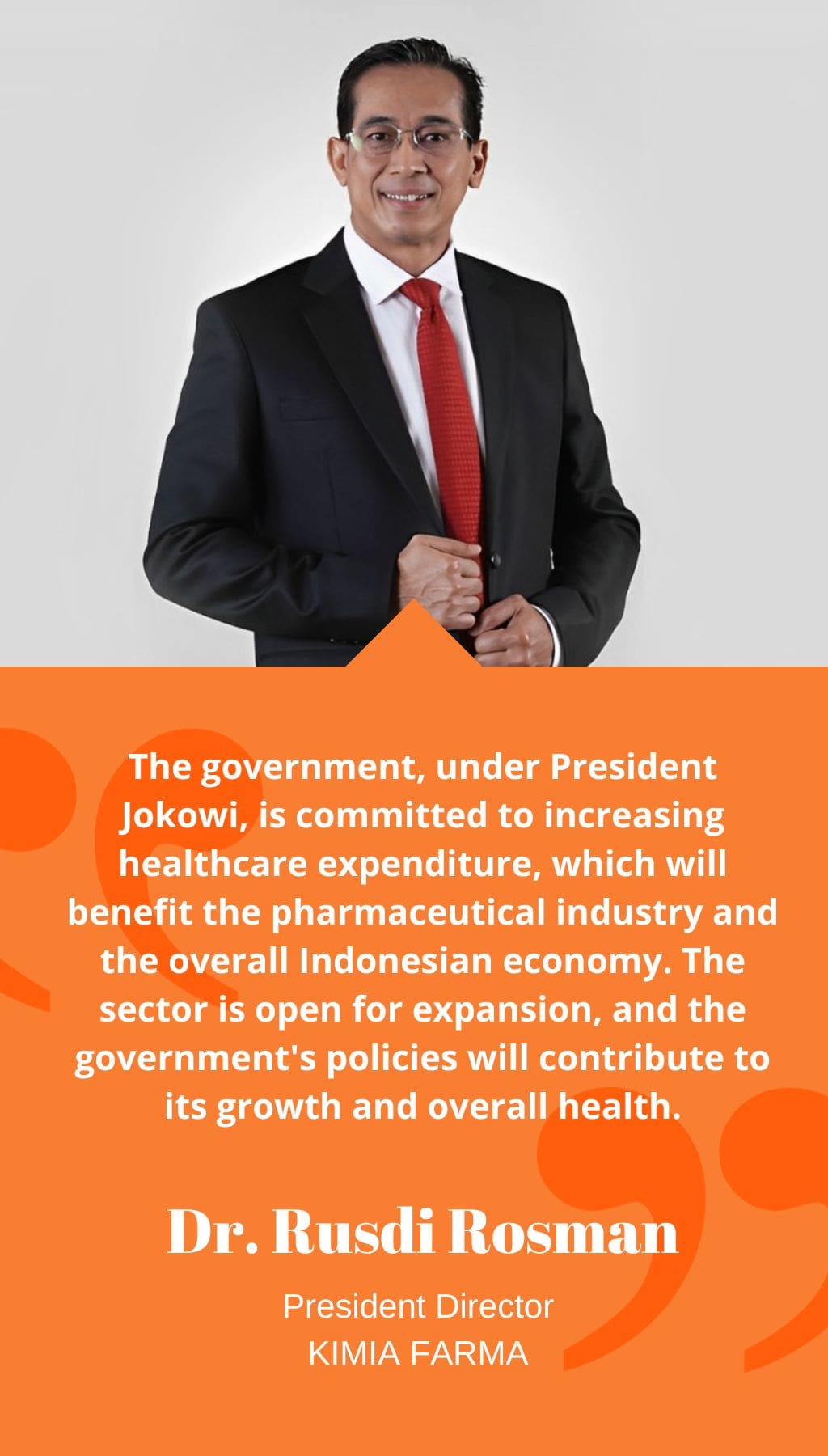
- Indonesia | 14 June 2015

Can you provide a brief overview of Kimia Farma and its operations in Indonesia?
Kimia Farma has been a significant presence in the Indonesian pharmaceutical industry since 1870 when it was established by the Dutch. In 1968, it was nationalized and became a state-owned pharmaceutical company under the name Kimia Farma. In 2001, the company went public and was listed on the Jakarta Stock Exchange and the Surabaya Stock Exchange. Currently, the Indonesian government holds a 90% stake in Kimia Farma, while the remaining 10% is privately owned.
Where is the majority of Kimia Farma’s activity concentrated in the pharmaceutical sector?
Kimia Farma primarily operates in the Indonesian market, which accounts for 96% of its activity. The remaining 4% comes from operations in Malaysia, Vietnam, and Myanmar.
Kimia Farma is known as a vertically integrated pharmaceutical company. Could you elaborate on its manufacturing facilities and subsidiaries?
As an operating holding company, Kimia Farma manages five manufacturing facilities in Indonesia, with the construction of another facility currently underway. Additionally, Kimia Farma has three primary subsidiaries. Pt. Kimia Farma Apotek is the retail branch, overseeing 612 pharmacies and subsidiary Pt. Kimia Farma Diagnostic. Pt. Kimia Farma Trading & Distribution comprises 45 distribution facilities throughout Indonesia. Lastly, Pt. Sinkona Indonesia Lestari is the sole producer of quinine salt and its derivatives in Indonesia.
What products are included in Kimia Farma’s portfolio?
Kimia Farma’s product profile consists of 60% generic products and 40% proprietary products. Most of the generics are prescription products, while the majority of proprietary products are over-the-counter (OTC) and herbal products. The company offers solutions across major therapeutic areas, with notable success in the areas of generics and herbal products. Kimia Farma is also the sole producer of HIV medication and narcotics in Indonesia due to its unique relationship with the government.
What is Kimia Farma’s growth strategy?
Kimia Farma aims to diversify and expand beyond being solely a pharmaceutical company. The company seeks to position itself as a full-service healthcare company by focusing on the cosmetics and raw materials markets. The cosmetics market is attractive due to higher margins and less competition. Kimia Farma plans to collaborate with Korean and Japanese companies to establish dedicated facilities in East Java for the production of raw materials and intravenous solutions.
Indonesia’s healthcare sector is expected to grow rapidly. How is Kimia Farma preparing for this growth?
Over the past three years, Kimia Farma has prioritized developing its downstream infrastructure by opening around 100 new retail pharmacies annually. In terms of the industry’s overall preparation, many manufacturing companies are producing more generic products to meet the increasing demand. This shift from branded prescription products to generics will make healthcare products more accessible to the population.
What challenges does the Indonesian pharmaceutical sector face?
Companies seeking to export their products face the challenge of meeting high-quality standards, which requires significant capital investment. The technical proficiency in pharmaceuticals in Indonesia is relatively lower compared to the Americas and Europe due to shortcomings in the education system. However, research organizations like LIPI and BPPT play a vital role in advancing the industry.
How can the Indonesian government further encourage the development of the pharmaceutical sector?
The government, under President Jokowi, is committed to increasing healthcare expenditure, which will benefit the pharmaceutical industry and the overall Indonesian economy. The sector is open for expansion, and the government’s policies will contribute to its growth and overall health.














